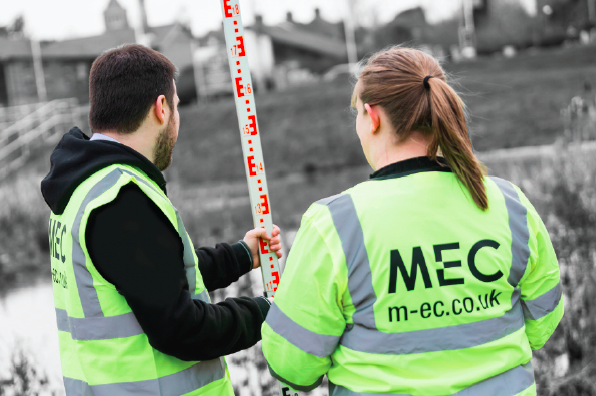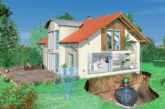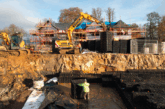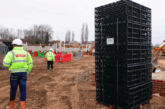
PHPD puts the questions to Thomas Sturtridge, Flood Risk Engineer, MEC Consulting Group, who discusses all things SuDS
What’s regarded as best practice for SuDS design?
The recognised industry standard is the Four Pillars. Outlined in the CIRIA SuDS manual, the Four Pillars; Quantity, Quality, Amenity and Biodiversity, provide a comprehensive benchmark for ensuring that any increases in surface water runoff leave a site at the same rate as if there was no development. When rainwater falls, the rate it reaches water courses or sewers is measured on a curve. When it falls on open green grass, you get a gentle sloping curve. When it falls on developed impermeable areas, the curve rises and declines sharply, which can cause flash flooding, sewer back-ups and wider flooding. The Four Pillars provides us with an approach to ‘flatten the curve’.
What are the most popular SuDS designs?
We’re seeing a strong preference for above ground or ‘green’ SuDS as these positively contribute to amenity and biodiversity. As well as tree pits and rain gardens, other above ground solutions include basins (with and without a permanent body of water within them), swales and wetlands. Ponds are also being requested more frequently, especially those with a permanent water basin at the bottom, as this enables effective water management but also makes an attractive habitat for ducks, geese and insects. ‘Blue’ SuDS infrastructure such as permeable paving or filter strips and drains still have their benefits but only tend to contribute towards water quantity and quality, hence the preference for green infrastructure that addresses all four pillars.
While the typical SuDS hierarchy is discharge at source (infiltration), discharge to a water course, discharge to a surface water sewer, and discharge to a combined sewer (as a last resort), there’s a growing demand for re-use. Some local authorities are shifting focus towards developments including rainwater harvesting, meaning individual dwellings having a water butt, and we anticipate this being more widely adopted to align with the new National Standards.
Do you have any other advice for housebuilders?
Early engagement saves time. Flood risk engineers can be consulted even before a land purchase. We will look at topography, potential outfall locations and how much attenuation is needed based on the proposal. It’s always more than you think! We can also assess any wider possible constraints such as immediate flood risks or nutrient neutrality, as well as factor in design for maintenance tracks and buffer zones around SuDS features to allow for future profiling work and to ensure a suitable distance is kept between these and new homes.
Having data like this before a masterplan is produced could make the difference in the overall number of units and subsequent site viability. The more of the Four Pillars we can meet well, the more likely the scheme will gain planning consent on flood risk and drainage terms. One final piece of advice, which seems obvious but needs saying; water follows gravity. We have seen drawings with basins beautifully drawn but located halfway up hills and water doesn’t go uphill! Pumping is always a last resort.
When we are looking for places to put attenuation basins it will aways be at the lowest point of a site, ideally with a gravity fed connection to the proposed outfall.
For more information, visit www.rdr.link/dbg033








